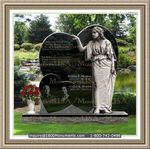|
Details To Expect When Concerning Cemetery Plaques
A healing process is part of the grieving cycle when a loved one passes away. This type of loss is dealt with in a number of different ways. The first step for most people is the practice of installing cemetery plaques on the place where the deceased are laid to rest.
The main reason these markers are so useful in this process is that they make a situation that may seem unbelievable, more tangible. They not only give a bit of closure by marking the site where one's remains are laid to rest, but they also provide a lasting memorial to a loved one. Both of these purposes are necessary for a mourner to begin accepting the situation.
A monument of this type will forever let others know that a person worth remember once lived. The name of the one buried within the plot is emblazoned on the plaque, usually accompanied by their birth and death dates. Some people find it comforting to also add an epitaph, decorative designs or engravings.
A fair variety of styles, shapes and sizes are available in this choice of marker. Many of them are flush for easy mounting, though it is not uncommon to see them with the features either added in dimensional relief or carved into the material. Personal preferences are generally what determines just how simple or complex the design will be.
Several different materials can be used for their construction. The most popular choice is bronze because of its durable properties, easy casting and beautiful appearance. Other substances such as stainless steel, brass, slate, granite and marble are also commonly used for this purpose.
Primarily, the individual or whoever they designated to make their interment arrangements, will decide the design though other factors may influence the choice. The burial facility might have restrictions on the options that are allowed on their grounds. Climate issues should also be considered to ensure the preferred material will endure.
|
|



























